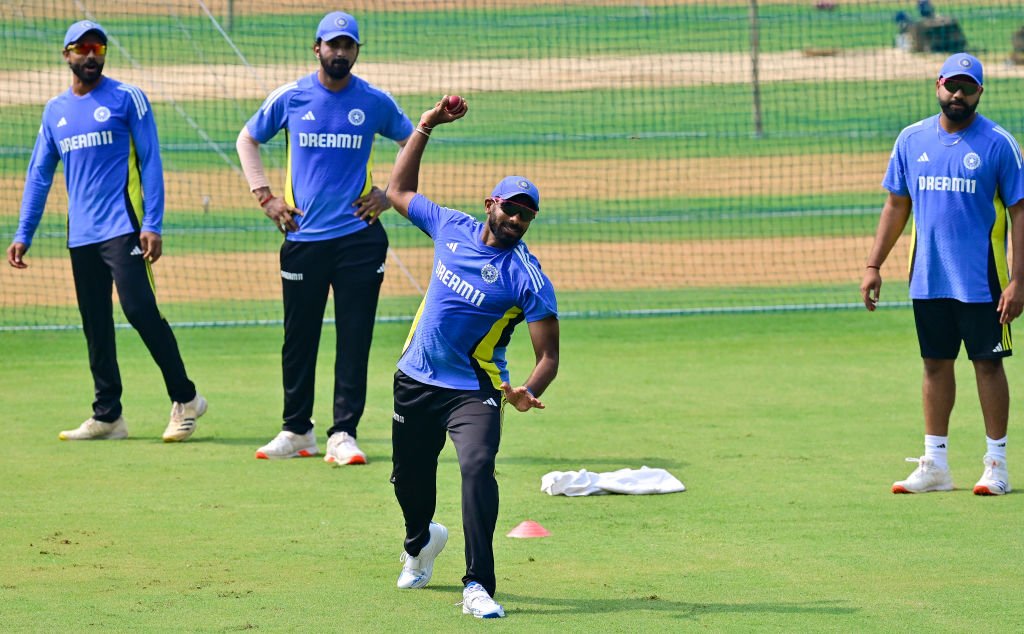
India has faced a persistent challenge when it comes to left-arm spinners in the World Test Championship (WTC), as evidenced by their poor performance against them. Recent statistics reveal that the Indian team has lost the second-most wickets to left-arm spinners in the history of the WTC, with only New Zealand having conceded more. This issue has been especially prominent in recent years, with the Indian batting lineup struggling against slow left-arm bowlers in crucial series across various conditions.
India’s Vulnerability to Left-arm Spinners
The fact that India has lost 69 wickets to left-arm spinners in just 12 Tests since January 2022 is concerning. This stat places them in the second position globally, only behind New Zealand, which has lost 72 wickets in 17 Tests. England, with 70 wickets in 19 matches, follows close behind. This vulnerability to left-arm spinners is a topic of discussion among cricket analysts and fans alike. In the Indian batting lineup, even the stalwarts like Rohit Sharma, Virat Kohli, and KL Rahul have shown susceptibility to left-arm spin.
Despite the presence of world-class batters, India’s record against left-arm spinners remains a worrying factor. While Rohit Sharma averages 39.66 against these bowlers, his consistency is hindered by six dismissals in 18 innings. Similarly, Virat Kohli has struggled with an average of 35.40 in 17 innings, with five dismissals to left-arm spinners. KL Rahul, with an average of 28.33 against left-arm spinners in 9 innings, has also found it difficult to cope with this type of bowling.
Impact on the Team’s Performance
The difficulty in playing left-arm spinners was apparent during India’s home series against various teams. In particular, the rise of bowlers like Ajaz Patel of New Zealand, Jack Leach of England, and Praveen Jayawickrama of Sri Lanka has further highlighted India’s weakness. For example, Ajaz Patel famously took 10 wickets in a match against India in 2021, showcasing how left-arm spinners can dominate the Indian batting lineup.
This vulnerability was also exposed in recent series against Bangladesh and Sri Lanka. During India’s 2022 tour of Bangladesh, left-arm spinners played a pivotal role in dismissing Indian batters. The trend continued with the recent series against Sri Lanka, where Indian batsmen once again struggled to counter the left-arm spin threat.
Individual Performances Against Left-arm Spinners
Some Indian players have been exceptions to this trend. For instance, wicketkeeper-batter Rishabh Pant has been impressive against left-arm spinners, averaging 95.66 in 10 innings. Similarly, young opener Yashasvi Jaiswal has shown resilience with a staggering average of 109 in 10 innings. Ravindra Jadeja, too, has been quite successful with the bat against left-arm spinners, averaging 105.50 from 18 innings. These players’ performances offer hope for India’s ability to handle left-arm spin, but they remain the exceptions rather than the norm.
On the other hand, players like Shubman Gill, who has an average of 39.66 against left-arm spinners, have also fallen victim to them on multiple occasions. This inconsistency in performance against left-arm spin is a major concern for India’s middle-order stability, especially in challenging conditions.
Strategies for Improvement
To overcome this issue, India needs to develop better countermeasures against left-arm spin. One approach could be to improve the technique of players like Sharma, Kohli, and Rahul against slower bowlers. A key area to focus on would be their footwork, which has often been found wanting in the face of left-arm spinners. Batters need to be more proactive in using their feet, driving the ball with more authority, and not letting the spinners dominate the game.
Another strategy could be to incorporate more left-arm spin bowling into India’s own arsenal. By having left-arm spinners like Axar Patel or Kuldeep Yadav in the playing XI, India could improve their familiarity and adaptability to this style of bowling. Familiarity with the spin challenges could be a helpful tool for their own batsmen when they face left-arm spinners.
The Road Ahead for India
Looking ahead, India’s performance against left-arm spinners will be crucial in upcoming Test series, particularly with teams like New Zealand, Sri Lanka, and England, all of which feature quality left-arm spinners in their ranks. The upcoming Test series will provide India with another opportunity to prove whether they can overcome this consistent weakness. It will also offer an opportunity for players like Rohit Sharma and Virat Kohli to shore up their weaknesses against this type of bowling.
The 2024 World Test Championship cycle will present a further test of India’s resilience against left-arm spinners. Given the significant role these bowlers play in modern Test cricket, India must find a way to counter this threat if they are to remain competitive at the highest level.

